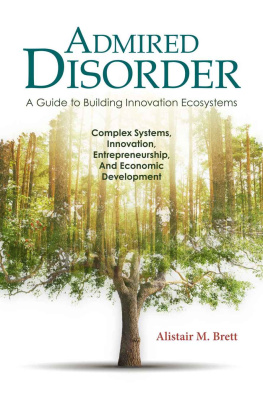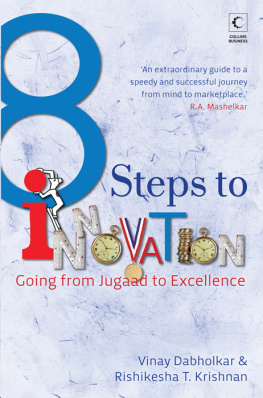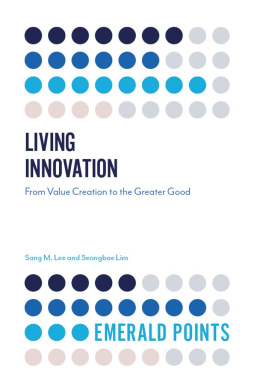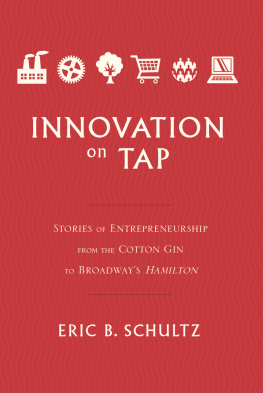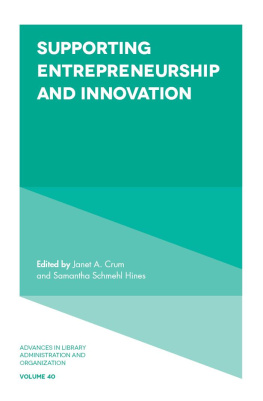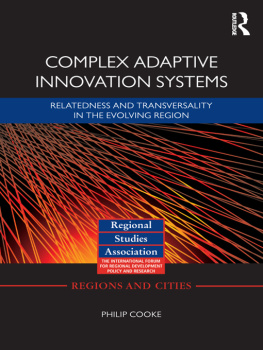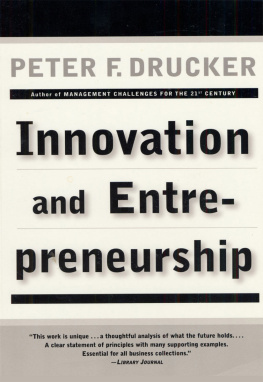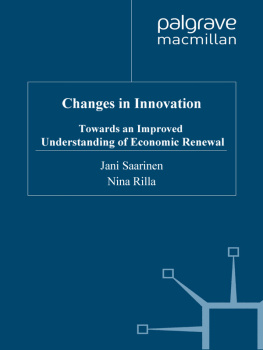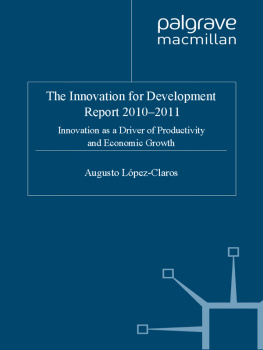Admired Disorder: A Guide to Building Innovation Ecosystems
Alistair M. Brett, 2019
All rights reserved. This book or any portion thereof may not be reproduced or used in any manner whatsoever without the express written permission of the publisher except for the use of brief quotations in a book review.
ISBN (Print Edition): 978-1-54396-617-6
ISBN (eBook Edition): 978-1-54396-618-3
Contents
Introduction
Innovation requires supportive innovation ecosystems . These have the character of what are known as complex adaptive systems .
This book is about explaining the statement above and applying it to building innovation ecosystems and improving existing ones. No previous knowledge of complexity is assumed. All concepts are explained as they occur. In most cases we shall introduce examples and the underlying science in whichever order better aids understanding. Examples have been chosen to illustrate widely applicable fundamentals. All cases and examples are real, suitably anonymized to respect privacy and proprietary results. Whether you are building ecosystems to support startups or mature businesses, coffee shops or corporations, this book supplies insights.
We know that new companies founded by entrepreneurs have the potential to create jobs and economic benefits. It is critical for new businesses to have a support network or ecosystem. What we need to understand better is how to design and build effective local and distributed ecosystems. Our focus is on building innovation ecosystems engineered to support economic and technology development and commercialization, including those environments experiencing dislocation and transition. The books methodologies and findings can be applied more generally to enhancing innovation in individual companies or organizations within innovation ecosystems or in other settings. The knowledge in this book can be applied to developed nations and regions as well as those less developed.
The book is not about new business incubators, accelerators, seed capital funds, proof of concept centers, or any of the functional components of innovation ecosystems as such . Knowledge of how to build these resources is readily available. The book is about how such component building blocks can function as an integrated whole and why.
For whom is this book written?
Builders of innovation and entrepreneurial ecosystems and policymakers because of their need to focus on solutions to building innovation and technology-based economies for communities, cities, and countries.
Businesses that want to build or improve internal ecosystems to support R&D and innovation.
Those teaching innovation and entrepreneurship, creating technology commercialization programs, practitioners, consultants, government officials, and advisors, because of their need to understand the role of innovation ecosystems in supporting their efforts.
International development banks, government agencies, and non-government organizations in the developing world because of their need to provide support services which are often absent.
Social scientists who need to add to their knowledge of how to support innovation.
Developers of incubators and accelerators because of their need to plan how these fit into the broader innovation ecosystem.
Those who need to create strategic plans in uncertain or unpredictable environments.
What this book is about and is not about .
The book draws on research into complexity, in a variety of disciplines, to analyze innovation ecosystems and bring research results to the more general reader. It is firmly research-based and extensively cites research results to support views expressed.
Our role is not to send the reader to the research literature, although references are provided for the adventurous, but to bring selected results from research and practice which may not be easily accessible to the reader in a manageable form for practical application. All references can be found using your favorite search engine.
Most importantly, the book uses the results of research and practice to provide practical help in engineering supportive innovation ecosystems which are robust and highly scalable . It also encourages new ways of thinking about innovation ecosystems. This is not a book about innovation as such
Reading this book
Printed books are linear; our topic is not. Interconnectivity poses some difficulties in writing separate Sections for this book. A consequence is that some necessary repetition results to reduce flipping back and forth between Sections. While it is recommended that the Sections be read in sequence, some readers may want to go to the capstone Section 25 first to see how concepts are applied and then work backwards. Others may want to jump to Section 7 to understand the Rainforest concept or preview Section 10 which is the core of the book. Still others may wish to review a Section where a topic of particular interest is discussed. Each Section begins with a brief summary.

Figure 1. Section sequences.
How this book came about
The genesis is the publication by my colleagues Victor W. Hwang and Greg Horowitt in 2012 of The Rainforest The theme of the Rainforest work is summarized in Section 7. It will not be assumed dear reader that you have read Victor and Gregs book, although I recommend doing so for the new perspective it gives on innovation.
The investigations described here began with the realization that Rainforests are complex adaptive systems (defined in Section 5). Rainforests are often described by useful metaphors (Section 26) which may imply this is the only possible description. It is not. There is a science of Rainforests the science and philosophy of complexity. I started to think about what features of the complex adaptive systems model might both explain Rainforests systems but also display Rainforests in a new light, especially helping to explain their more mysterious characteristics, or make predictions about the behavior of innovation ecosystems.
We shall further see that understanding such complex adaptive innovation ecosystems helps deliver economic and social benefits, achieve competitive advantage, and create a robust innovation culture through new business opportunities, workforce utilization, exports, investment, quality of life, prosperity, and more in a holistic, positive manner. This new book extends the Rainforest concept and aims to provide:
The science behind stories of innovation ecosystems.
1.Practical applications for engineering high potential innovation ecosystems.
2.An understanding of complex adaptive innovation ecosystems to help create an innovation culture.
3.Explanations of the behavior of Rainforest systems which can only be understood by treating Rainforests as complex adaptive systems.
4.Where possible, prediction of a complex innovation ecosystems future behavior given certain kinds of knowledge about present conditions.
5.Ways to intervene in complex innovation ecosystems to influence present and future behavior and sustainability.
To use an analogy: architects design buildings and draw their visions. These drawings are converted into detailed construction plans by engineers so a building can be built and function. Rainforest principles have to be converted into applications, which is where knowledge of the science comes in. Not everything in these principles is new but Rainforest science pulls them together into a system of thought.

